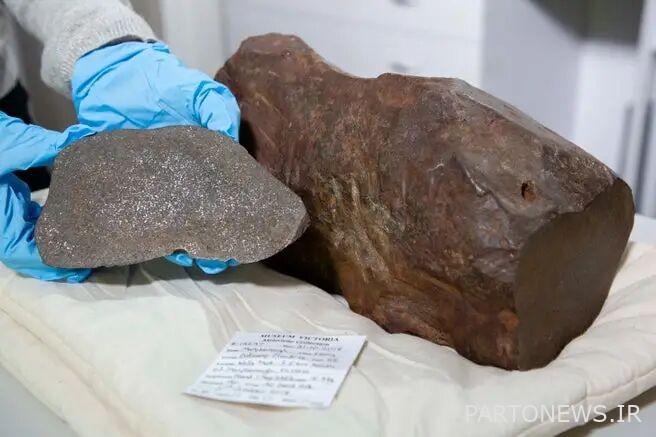Strange stones were discovered in five continents of the world!

According to Ekhzada Online, citing Khabar Online, human damage to nature and the environment is increasing day by day, and recently a rare and strange phenomenon has been seen in all five continents of the world, which has surprised scientists: plastic stones.
These sediments are a combination of rock polymers and human waste plastics that have been compressed together. Now these plastic stones have been found both on the beaches and in 11 countries in 5 continents. These stones show the amount of plastic pollution around the world, and one of the researchers stated that these stones represent an imminent danger to the stability of the oceans and ultimately human health.
Naming and how to create these dangerous stones
There are differences of opinion between different scientific communities to name these stones, and some scientists describe these plastic stones in different ways. Among these names, options such as “plastistone”, “plastiglomerate”, “plasticrust”, “plastitar”, “plastisandstone” and “anthropoquinas” are heard.
The first example of these plastic stones was reported about ten years ago by a geologist named Patricia Corcoran in Hawaii and she called this stone Plastiglomera.
Di Hu, an associate professor of environment at Tsinghua University in China and the author of an article in which he investigated the formation and spread of these stones, said about the components of these plastic stones: “Melted plastics, grains of sand, rocky rocks, corals, shells and wood remains. After lighting a fire on Camilo Beach in Hawaii, they came together and gradually formed such rocks. Since then, such stones have been repeatedly found on the shores of islands and inland.”
He continued, “Our recent study was the first to show the discovery of these plastic rocks in an inland area and the first to report a chemical bond between plastic and rock.” “Our recent survey shows that plastic rocks have been found in 5 continents and 11 different countries.”
In their recent paper, Ho and his collaborators explain that plastic rocks may have formed in a wide range of ways. In this regard, he said: “Burning is a mechanism that we think plays an important role in the formation of these stones. In this situation, the plastic waste is melted during the fire or incineration of the waste and after cooling, it clumps together in a mineral matrix. “When waves hit intertidal rocks, plastic debris from marine sources physically adheres to the surface of the rock.”
Another way that probably leads to the formation of plastic rocks is through oil spills that contain significant amounts of plastic and reach the beach. According to Hu, these petroleum materials are tightly bound to the host rock matrix and undergo partial evaporation and solidification processes.
He continued about this: “Finally, in our study, we observed that chemical bonds help the production of these plastic stones in a non-coastal area. “We hypothesize that sunlight will oxidize the plastic and eventually lead to this chemical bond.”
Seeing these stones in 5 continents of the world
Plastic rocks have been found in Bangladesh, Brazil, China, Hawaii, India, Italy, Japan, Peru, Portugal, Canary Islands and England. The proportions of plastic polymers in these rocks match the proportions in plastic waste.
Gabriel Enrique Delatorre, a researcher of plastic pollution at the University of San Ignacio de Loyola in Peru, said about this: “Plastistones or plastic stones were proposed as a new term to describe plastics that are incorporated into rocks. Although this type of plastic pollution is new and emerging, it has been observed in many places around the world. Interestingly, when plastic is combined in rock, their behavior in the environment changes and probably the fate of plastics in the environment will undergo changes. “All this shows how complicated the problem of plastic pollution has become.”
Seeing these stones in 5 continents of the world
The formation of these plastic stones around the world is a direct result of the pollution of plastics that we introduce into the environment, which amounts to approximately 22 to 48 million tons per year.
The authors of this article say: “From a geological point of view, the mass of plastic deposited by modern humans cannot be ignored.” This pollution is much higher in some areas such as cities, mulched agricultural soils, and places where plastic waste is dumped.
Rocks containing plastic are expected to appear increasingly as part of natural geological processes and to have a long shelf life.
What materials are plastic stones made of?
Hu continued: “These plastic stones may be made from all kinds of plastic waste; “Plastic bags, bottles, fishing gear, marine ropes, and agricultural mulches that have been combined with rocks to become these plastic rocks.”
Plastic rocks may alter microbial communities in the soil and surrounding environment, and this can affect local ecosystems as well. Hu continued, “We observed less microbial diversity in these plastic rocks compared to the surrounding soil. At the same time, we observed several microorganisms that had a tendency to colonize these plastic stones. However, the potential environmental risks associated with this phenomenon are still under investigation.
Worst of all, plastic rocks lead to the production of microplastics, which are small pieces of plastic pollution that are scattered around the world and even in the bodies of humans and animals.
“The appearance of these plastic rocks found on pristine coastal islands of India raises the possibility of the release of microplastics and related chemical forms due to weathering or waves,” said Professor Punyaslok Bahadri, a professor of biogeochemistry from the Indian Institute of Science Education.
He continued: “The released microplastics enter the ocean and enter the bodies of marine mammals and humans through edible fish. These plastic stones are a definite danger to the stability of the oceans, the water economy and the overall health of humans.”


